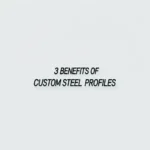Steel slitting is a critical process in metal fabrication that involves cutting large coils of steel into narrower, more manageable strips while maintaining precise dimensions and edge quality. This technique is widely employed in industries ranging from automotive to construction, where material consistency and accuracy are paramount. Below, we explore the technical parameters, industrial applications, and advantages of precision steel slitting.


Technical Parameters in Precision Steel Slitting
Achieving high-quality slit coils requires meticulous control over multiple parameters. Key technical considerations include:
-
Coil Dimensions
- Width: Standard coils range from 500 mm to 2,000 mm, with slit widths as narrow as 10 mm.
- Thickness: Typically 0.1 mm to 6 mm, depending on the application.
- Inner Diameter (ID): Commonly 508 mm or 610 mm, with custom IDs available.
- Outer Diameter (OD): Varies based on coil weight (up to 25 tons).
-
Slitting Line Components
- Uncoiler: Ensures smooth feeding of the master coil.
- Slitter Head: Equipped with rotary knives (male and female) to cut the steel.
- Recoiler: Rewinds the slit strips into smaller coils.
- Tension Control System: Prevents edge deformation and maintains uniformity.
-
Tolerances
- Width Tolerance: ±0.05 mm to ±0.25 mm, depending on material thickness.
- Edge Quality: Burr height must be ≤ 5% of material thickness (e.g., ≤ 0.05 mm for a 1 mm strip).
- Coil Winding: Tightness and alignment are critical to prevent telescoping or camber.
-
Material Considerations
- Hardness: Slitting harder materials (e.g., stainless steel) requires specialized knives and higher precision.
- Coating: Galvanized or pre-painted steels need non-marring equipment to preserve surface integrity.
Industrial Applications
Precision steel slitting serves diverse industries, each with unique requirements:
-
Automotive
- Applications: Body panels, chassis components, and trim.
- Requirements: Tight tolerances (±0.1 mm) and burr-free edges to ensure weldability and finish quality.
-
Construction
- Applications: Roofing sheets, structural beams, and HVAC ducting.
- Requirements: Corrosion-resistant slit coils (e.g., galvanized steel) with consistent width.
-
Electronics
- Applications: Transformer cores, motor laminations, and shielding components.
- Requirements: Ultra-thin strips (0.1–0.3 mm) with minimal edge deformation.
-
Packaging
- Applications: Steel cans, lids, and containers.
- Requirements: High-speed slitting (up to 300 m/min) and clean edges to prevent contamination.
-
Appliances
- Applications: Refrigerator panels, washing machine drums, and oven components.
- Requirements: Aesthetic edge quality and dimensional stability.
Advantages of Precision Steel Slitting
- Material Efficiency: Minimizes waste by optimizing slit widths for downstream processes.
- Cost Savings: Reduces the need for secondary cutting or edge conditioning.
- Customization: Enables tailored coil widths and lengths for specific applications.
- Improved Productivity: High-speed slitting lines can process coils in minutes, not hours.
- Enhanced Quality: Consistent edge quality and dimensional accuracy reduce rework.
Challenges and Innovations
While slitting is a mature technology, challenges persist:
– Edge Burr Management: Advanced knife designs (e.g., carbide inserts) reduce burr formation.
– Coil Edge Defects: Laser-guided alignment systems minimize misalignment.
– Automation: AI-driven tension control and real-time monitoring improve throughput.
Innovations like laser slitting and flying shear systems are pushing the boundaries of precision, enabling slitting of ultra-high-strength steels (e.g., AHSS) with unprecedented accuracy.
At Baoli, a leading Chinese steel manufacturer, we specialize in precision steel slitting for global markets. Our state-of-the-art slitting lines support custom widths (10–2,000 mm), thicknesses (0.1–6 mm), and tailored tolerances to meet your exact specifications.
Precision Steel Slitting: Technical Parameters and Industrial Applications — This article provides a practical buyer‑focused overview with specifications, selection tips, and on‑site considerations. Explore related topics: blog.
Key Specifications and Standards
- Standards: ASTM / EN / JIS (e.g., ASTM A240/A36, EN 10088/10025, JIS G4304/G3131).
- Surface options: 2B, BA, No.4, HL, mirror; galvanized (electro / hot‑dip).
- Processing: hot‑rolled, cold‑rolled, annealed & pickled, welded or seamless.
- Typical services: slitting, shearing, cut‑to‑length, drilling, beveling, deburring.
- Documentation: MTC, CO, packing list with net/gross weight and heat numbers.
Typical Applications
Construction, machinery, automotive, energy, enclosures and fencing, food equipment (for stainless), and general fabrication. Match grade and finish to corrosion, strength, and appearance requirements.
Selection Guide
- Use certified material with Mill Test Certificate (MTC).
- Confirm standards (ASTM/EN/JIS) and tolerances per drawing.
- Match surface finish to application (2B/BA/No.4/galvanized).
- Specify dimensions and acceptable deviation upfront.
- Plan packaging and corrosion protection for transit.
Processing, Packaging and Logistics
We adopt edge protection, waterproof wrapping, rust‑inhibiting paper, fumigated pallets, and strapping suitable for sea freight. Loading photos and weight lists are provided for each shipment.
FAQs
Q: What lead time can I expect?
A: Typically 7–15 days ex‑works for standard sizes; custom processing may extend the schedule.
Q: Can you provide cut‑to‑size service?
A: Yes. We slit, shear, cut, drill, bevel and deburr to drawing to reduce waste and speed installation.
Q: How do you ensure quality?
A: Incoming inspection, process control, and final inspection with traceable heat numbers; third‑party inspection is available.
Q: Do you support small trial orders?
A: We support pilot quantities with consolidated shipping to control cost.
All values are typical and for guidance only; confirm with the datasheet and purchase order before production.
Related products: view details.
Related products: view details.





